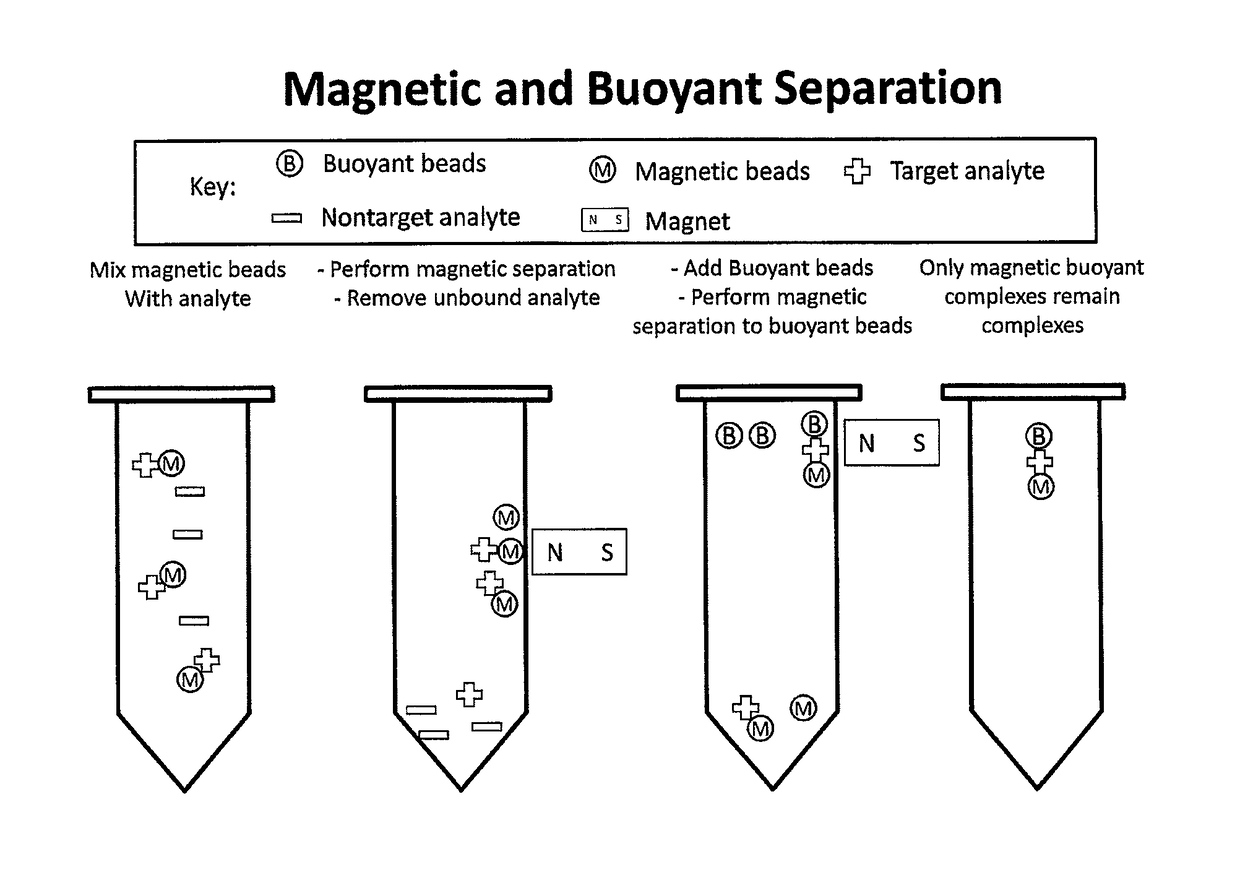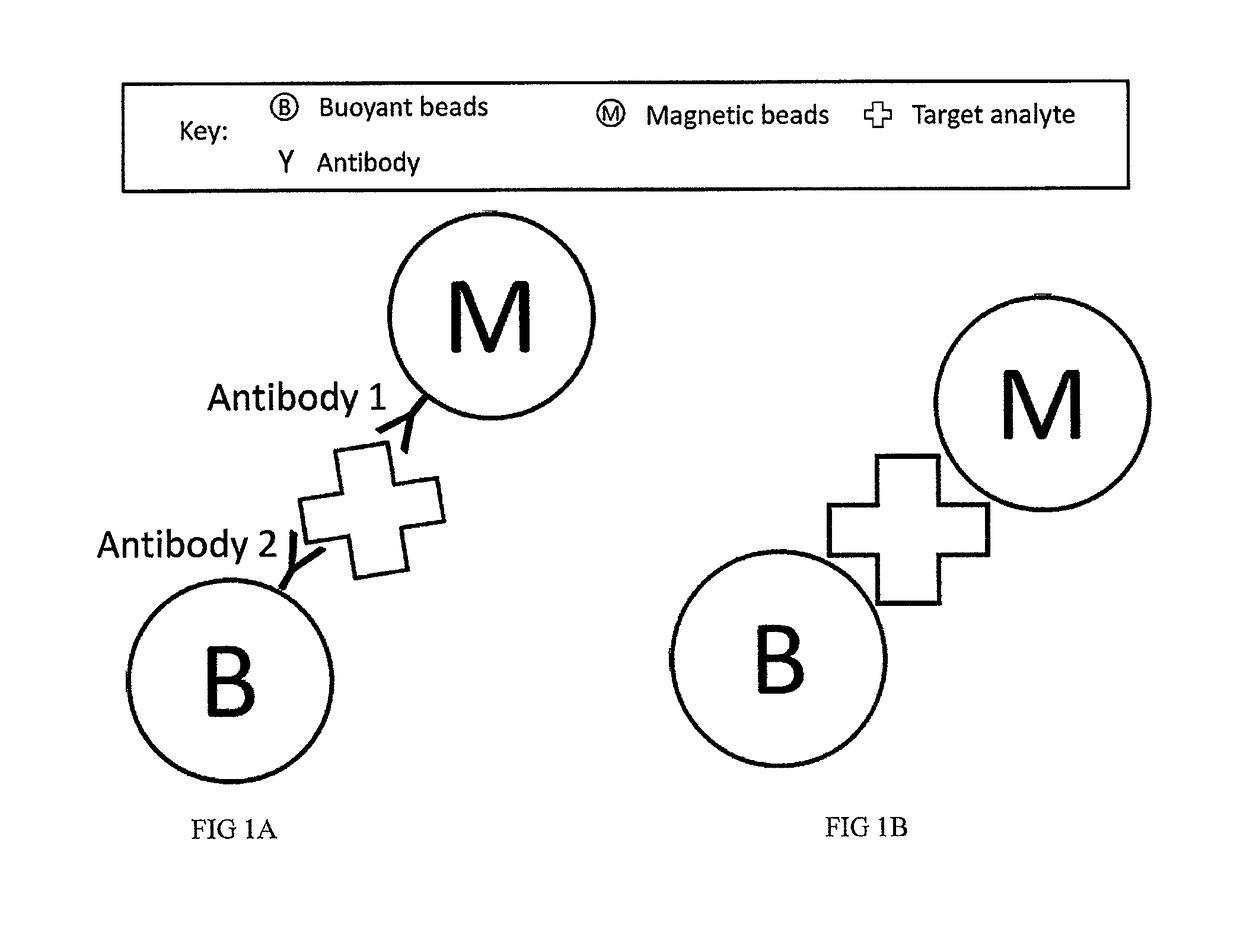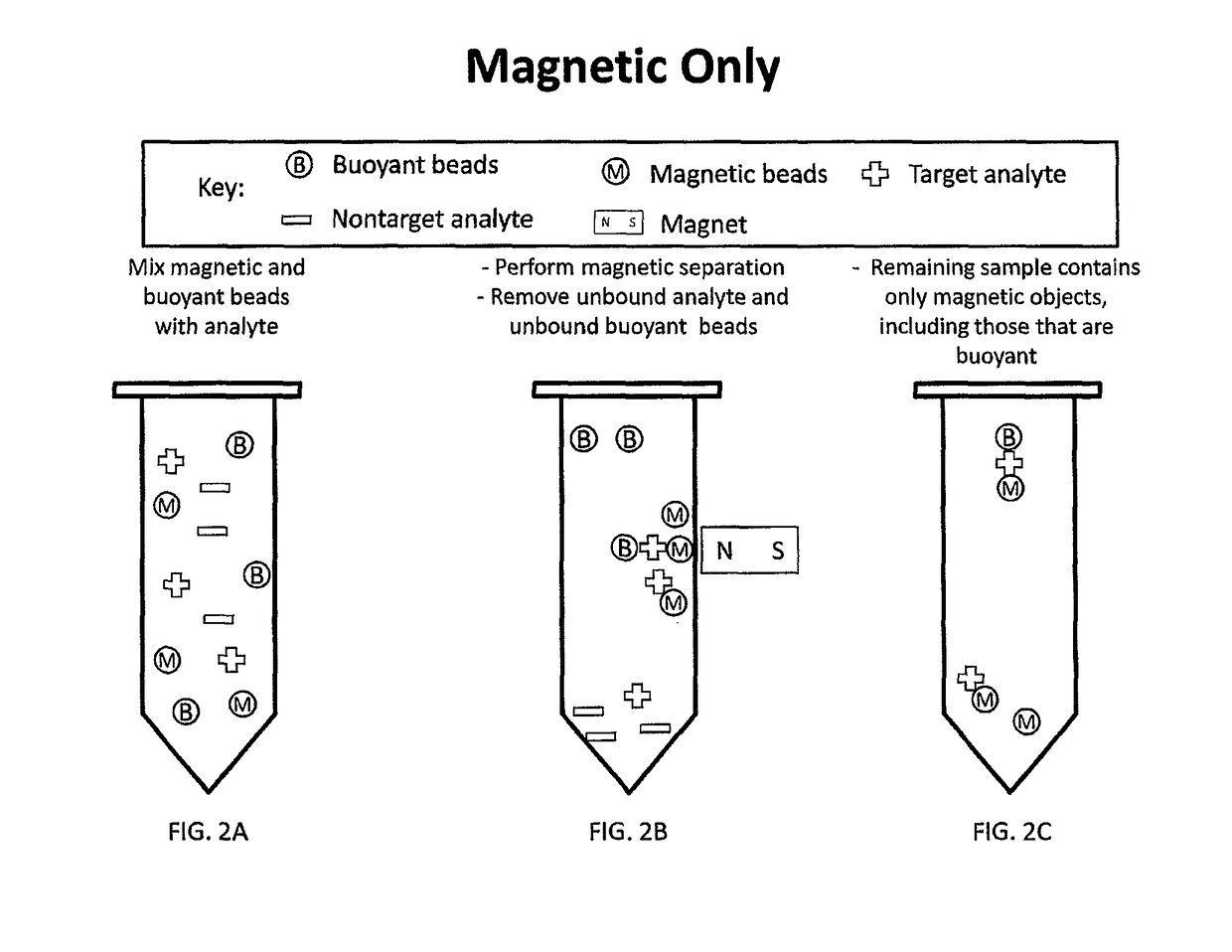Multi-mode separation for target detection
a target detection and multi-mode separation technology, applied in the field of target detection, can solve the problems of limited specificity, non-target capture, and high chance of non-specific binding, and achieve the effects of improving sensitivity, improving binding time, and improving test sensitivity
- Summary
- Abstract
- Description
- Claims
- Application Information
AI Technical Summary
Benefits of technology
Problems solved by technology
Method used
Image
Examples
example separation
Devices
[0106]FIGS. 22-24 illustrate different example separation devices as may be used to implement the present techniques. FIG. 22 illustrates a separation device 1000, which may use a disposable or reusable fluidic chamber. A sample inlet 1001 is coupled to channel 1002 connecting to a first separation chamber 1003, e.g., that is configured to separate unlabeled cells or debris from the rest of the sample (e.g. magnetic beads, buoyant beads, two-bead complexes). In the illustrated example, a magnet 1004 is positioned adjacent to the chamber 1003 and creates a gradient so that magnetic beads flow with the floating fraction (e.g. an upward magnetic force) in the chamber 1003. The chamber 1003 has a branching split so that floating and magnetic fraction continues into the next separation chamber 1008, through a channel 1007, while everything else flows to channel 1005 to an outlet (or reservoir) 1006 for sample measurement and / or testing, or for discarding.
[0107]The separation chamb...
PUM
| Property | Measurement | Unit |
|---|---|---|
| volumes | aaaaa | aaaaa |
| diameter | aaaaa | aaaaa |
| diameter | aaaaa | aaaaa |
Abstract
Description
Claims
Application Information
 Login to View More
Login to View More - R&D
- Intellectual Property
- Life Sciences
- Materials
- Tech Scout
- Unparalleled Data Quality
- Higher Quality Content
- 60% Fewer Hallucinations
Browse by: Latest US Patents, China's latest patents, Technical Efficacy Thesaurus, Application Domain, Technology Topic, Popular Technical Reports.
© 2025 PatSnap. All rights reserved.Legal|Privacy policy|Modern Slavery Act Transparency Statement|Sitemap|About US| Contact US: help@patsnap.com



